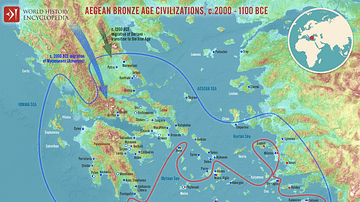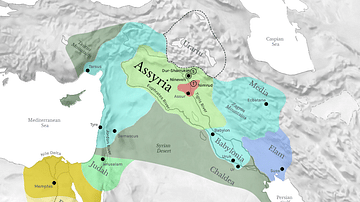Illustration
This map illustrates the rise and expansion of the Hittite Empire, an influential Anatolian power that flourished between circa 1750 and 1200 BCE. At its height in the mid-14th century BCE, the Hittites ruled much of Asia Minor, extending their control from the northern Levant to Upper Mesopotamia and becoming a key player in the Bronze Age international system.
Originating from Hattusa in central Anatolia, the Hittites spoke an Indo-European language and established a complex society marked by military innovation, legal codes, and diplomatic engagement with Egypt, Mitanni, and Babylon. Their empire collapsed suddenly around 1180 BCE amid the broader Bronze Age Collapse, facing internal strife, pressure from the Kaska tribes, and external invasions by the Sea Peoples. In the aftermath, the region fragmented into smaller “Neo-Hittite” city-states, some of which persisted in northern Syria and southeastern Anatolia until the 8th century BCE.
About the Author
Cite This Work
APA Style
Netchev, S. (2022, July 06). Map of the Hittite Empire, 13th century BCE. World History Encyclopedia. Retrieved from https://www.worldhistory.org/image/16114/map-of-the-hittite-empire-13th-century-bce/
Chicago Style
Netchev, Simeon. "Map of the Hittite Empire, 13th century BCE." World History Encyclopedia. Last modified July 06, 2022. https://www.worldhistory.org/image/16114/map-of-the-hittite-empire-13th-century-bce/.
MLA Style
Netchev, Simeon. "Map of the Hittite Empire, 13th century BCE." World History Encyclopedia. World History Encyclopedia, 06 Jul 2022, https://www.worldhistory.org/image/16114/map-of-the-hittite-empire-13th-century-bce/. Web. 29 Jul 2025.








